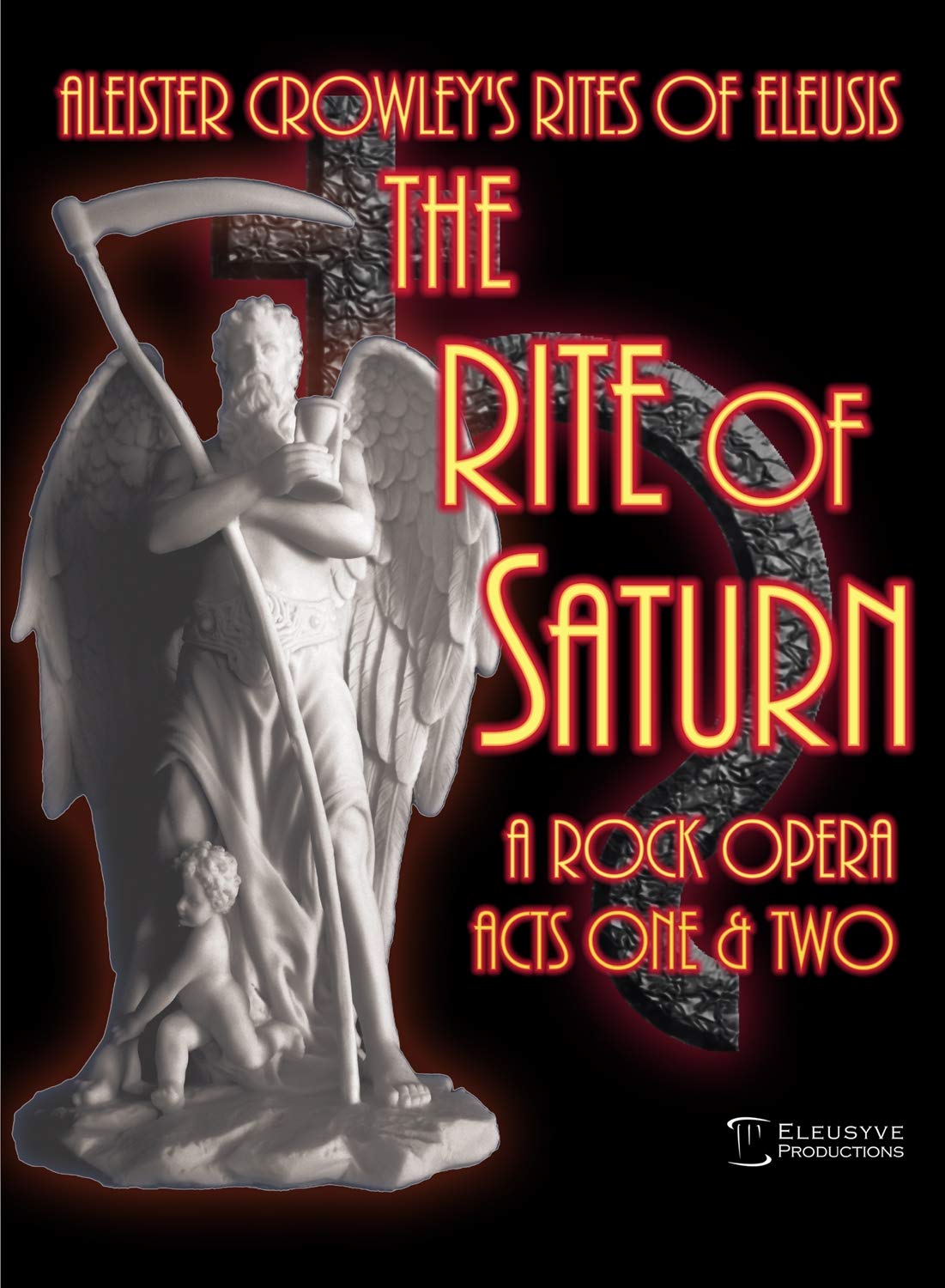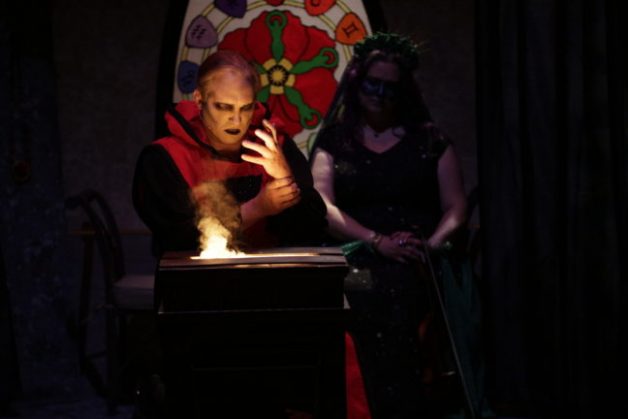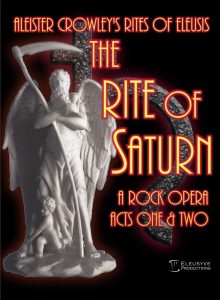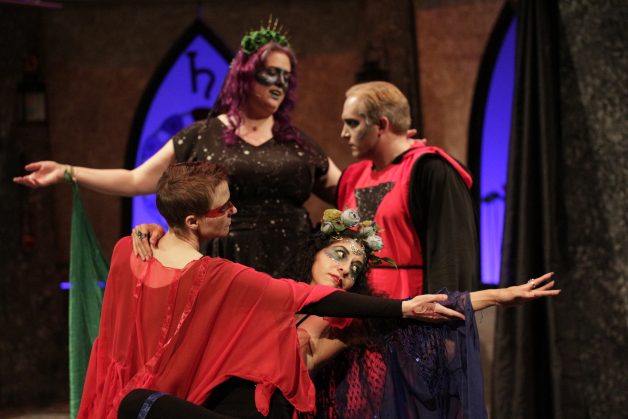Eleusyve Productions releases today its award-winning rock opera adaptation of Aleister Crowley’s “The Rite of Saturn.” This release concludes a twenty-year labor of love, adapting all seven of The Rites of Eleusis for the musical stage. The project began in 2001, when composer Jon Sewell put the poems from “The Rite of Jupiter” to music. While this incarnation left the dialogue between spoken, it set the path for Sewell to compose full-blown rock opera scores for “The Rite of Luna” (2005), “The Rite of Venus” (2007), “The Rite of Mercury” (2010), “The Rite of Sol” (2012), and “The Rite of Mars” (2014) before returning back to their roots in 2016 for the complete “Rite of Jupiter.”
Finally, “The Rite of Saturn” was performed in Seattle (like the other Rites), on September 7–8 and 13–15, 2018. The cast included Jon Sewell as Magister Templi, with Sunnie Larsen (Mater Cœli, violin and vocals), Aquarius (Tim Bruhn), Capricornus (Ryan Holsather), Capricornus Emissarius (Richard “Blackcat” Cardone), and Shawna Jacques (Choragoge, leader of the chorus), among other performers in the roles of drummers, spirits, garrison, and locals.
Produced by Sewell, Melissa Holm (who was also stage director) and Bob Jones (videography and editing), this final video in the series was submitted to several independent film festivals for screening in 2020. “The Rite of Saturn” won Best in Musical Films at the inaugural Midway Multicultural Music and Arts Festival in February. Unfortunately, submissions to other events like the Esoteric Film Festival (Moscow) and Hermetic Film Festival (Venice) were rendered moot once COVID-19 prompted the cancellation or postponement of any large gatherings worldwide. So now the full film, clocking in at two hours, is available streaming on Vimeo or on DVD from Amazon.
The Rites of Eleusis were originally written in 1910 as a series of seven plays, one for each of the seven celestial bodies in classical astrology. The goal was to use poetry, music, dance and drama in the service of ritual to create a state of religious ecstasy in attendees. Drawing on Crowley’s favorite poets and fitting music from the repertoire of concert violinist Leila Waddell, Crowley created a series of original dramas, adding his own dialogue and poetry to finish each Rite’s narrative. Performed in a private room at London’s Caxton Hall on seven consecutive Wednesdays starting on October 19, the performances created a bit of press, not all of it good. Looking to sell copies, some newspapers accused Crowley with his Rites of trying to start a shocking new religion. Which, it turns out, he was! Since O.T.O.’s revival in the 1970s, The Rites of Eleusis have been staged over the years by members of the Order worldwide. Those by Eleusyve Productions are among the most ambitious.

An admission ticket for Aleister Crowley’s production of The Rites of Eleusis (1910), showing in reverse order the original sequence of its seven parts.
When Aleister Crowley and the aspirants of the A∴A∴ staged The Rites of Eleusis, they began with “The Rite of Saturn.” It was a bitter pill for the audience to swallow. Much of the play was performed in low light to match the play’s incredibly somber meditations on death, faith, and time. This prompted a reviewer from The Sketch to muse, “the hall was so dark that one may well call the Rites of Eleusis elusive.” The Looking Glass tabloid similarly noted that the room was “plunged in complete darkness.”
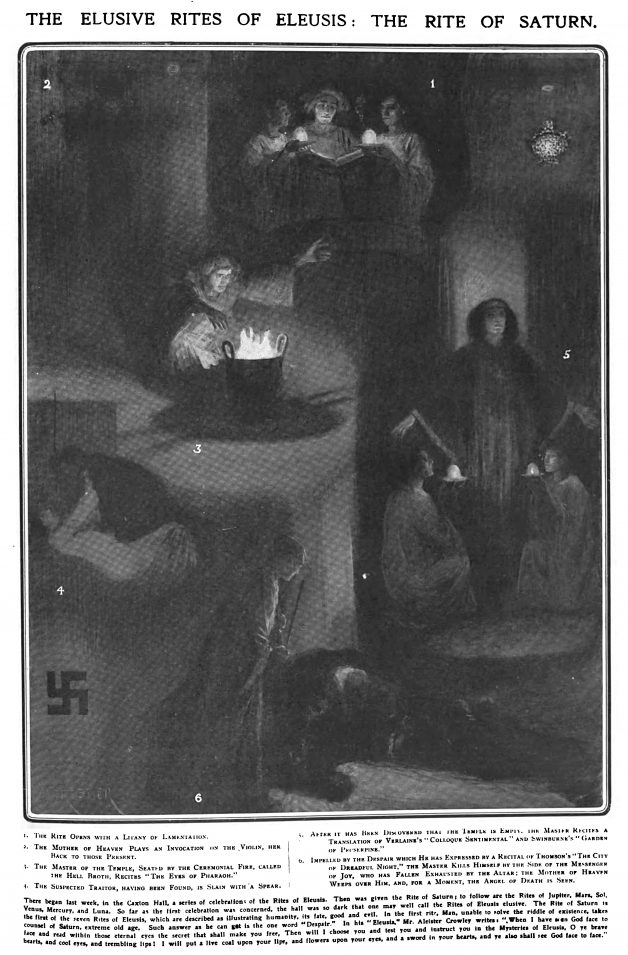
This reproduction from The Sketch, October 26, 1910, conveys the dark mood—and lighting—of the original “Rite of Saturn.”
Wisely, Eleusyve Productions saved Saturn for last, the enthusiasm and goodwill of its earlier productions bringing viewers home again for the somber conclusion of the cycle. Befitting the ponderous mood of Saturn—ancient devourer of his offspring, the slowest of the seven classical planets—the tempo of Sewell’s compositions is mostly restrained (although a couple of numbers in the second act are spritelier). The tempo notwithstanding, the music is heavy. It’s a rock opera, after all, so we’re treated to electric guitars, drums, and keyboards. Plus Sunnie Larsen with her violin assumes the role of Crowley’s musical muse, Leila Waddell a.k.a. the Mother of Heaven.
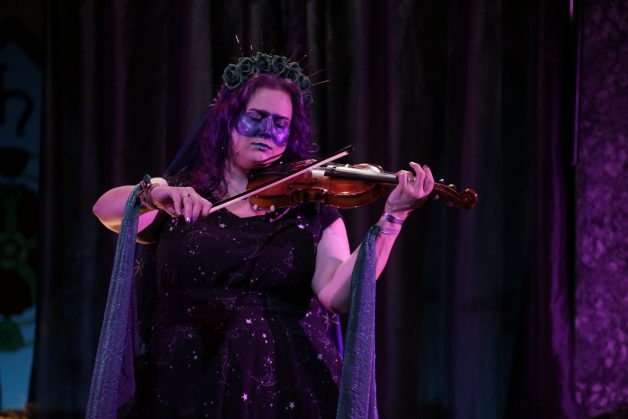
Singer and violinist Sunnie Larsen reprises the role of as Mater Cœli, originally filled by Crowley’s muse, Leila Waddell.
Holm’s staging isn’t as dimly-lit as Crowley’s original, which is good news for those of us watching the video. In addition, the setting and interpretation of the story has moments of humor, joy, and irony mixed into the larger theme of spiritual dread, in which—as Nietzsche proclaimed—God is dead. Compared to the spartan staging of the originals, this modern take on “The Rite of Saturn” definitely raises the bar in every respect: from set design to costuming to lighting to music.
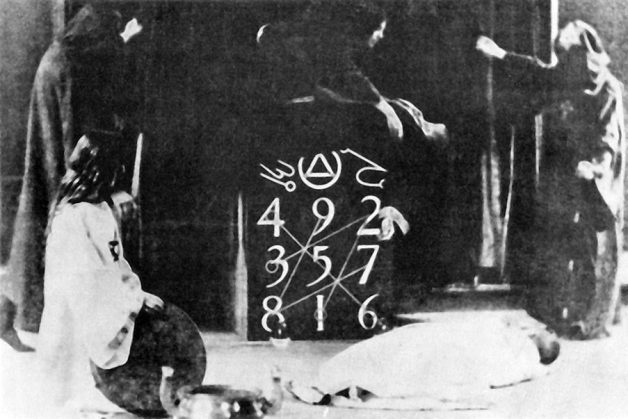
As above so below: The cast and stage for “The Rite of Saturn” by Crowley and co. (above) and Eleusyve Productions (below).
“The Rite of Saturn” is streaming on Vimeo and available on DVD at Amazon. For more information, see ritesofeleusis.com

